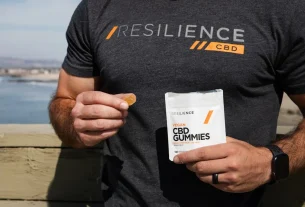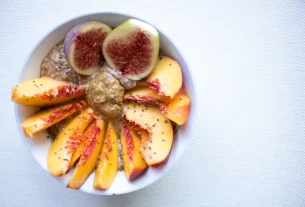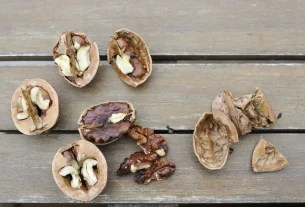Estimated Reading Time: 7 minutes
Estimated Reading Time: 7 minutes
TTred of the midday slump? Feeling sluggish by 3 PM? I hear you.
For years, I was stuck in a cycle of grabbing whatever was easiest – often something loaded with sugar and processed ingredients.
Then I discovered the transformative power of healthy meal prep with natural ingredients.
It’s not just about convenience; it’s about reclaiming your energy, nourishing your body with the good stuff, and actually enjoying the process.
This isn’t some rigid diet, either. It’s about building a sustainable lifestyle that supports your well-being. Let’s dive in!
The core of this approach is simple: planning, preparation, and prioritizing whole, unprocessed foods. Sounds overwhelming?
Trust me, it doesn’t have to be!
We’ll break it down step-by-step, focusing on practical tips, easy recipes, and, most importantly, a mindset shift that makes healthy eating a joy, not a chore.
Why swap the convenience of takeout or pre-packaged meals for healthy meal prep with natural ingredients?
The answer, in short, is your health and your happiness.
Think about it: when you’re in control of your meals, you’re in control of what goes *into* your body.
You’re dodging the hidden sugars, excessive sodium, and artificial additives often found in processed foods.
You’re also flooding your system with vital nutrients that fuel your body from the inside out.
Beyond the physical benefits, meal prepping also saves time and money.
Imagine freeing up your evenings from cooking and having that extra hour to pursue a hobby or unwind with loved ones!
I once worked with a client, let’s call her Sarah, who was perpetually exhausted.
She was grabbing quick, sugary snacks throughout the day, which created a roller coaster of energy highs and lows.
After incorporating meal prepping with natural foods into her routine, Sarah experienced a remarkable transformation.
She not only lost weight, but her energy levels soared. This allowed her to take more yoga classes, which improved her mood.
It’s not just about the food; it’s about creating a positive feedback loop that supports your overall well-being.
Ready to take the plunge? Let’s gather the essential tools and ingredients. You don’t need fancy gadgets to start.
What you *do* need is a bit of planning, some quality ingredients, and the right containers. It really doesn’t take much to get going!
The true stars of your meal prep are the ingredients. Focus on whole, unprocessed foods. Here’s a general guideline:
The beauty of meal prepping is that it’s infinitely customizable. There’s a world of possibilities, from simple salads to elaborate dishes.
Let’s explore some easy recipes and meal ideas to get you started.
Here’s a sample plan to get you thinking. Remember, these are just starting points. Customize them to your liking!
I usually plan my meals for the week on Sunday and then shop for all my ingredients.
I spend a couple of hours prepping on Sunday evening, chopping vegetables, cooking grains, and assembling my meals for the week.
This saves me so much time and prevents those last-minute junk food cravings.
This is the perfect example of the ease of meal prepping. Roasting vegetables enhances their natural sweetness and makes them deliciously convenient.
You can add these roasted vegetables to salads, grain bowls, or enjoy them as a side dish.
Making healthy meal prep with natural ingredients a sustainable habit is all about the details.
Here are some insider tips and tricks to make your experience smooth, enjoyable, and long-lasting.
Batch cooking is your best friend. Cook large quantities of grains (rice, quinoa), protein (chicken, beans), and roasted vegetables at once.
Store them in individual containers to simplify assembly throughout the week. This is your secret weapon!
Proper storage is key to preserving your meals. Store cooked grains and proteins in airtight containers in the refrigerator for up to 4-5 days.
Salads are best assembled just before eating to prevent them from getting soggy. Invest in good quality containers that are easy to clean.
The freezer is a lifesaver. Soups, stews, and even cooked meals can be frozen for several weeks.
This is perfect for those times you don’t have time to cook and need something readily available.
Make sure to label and date your containers to keep track of what’s what!
Many people shy away from meal prepping because they believe it’s time-consuming, expensive, or difficult. Let’s debunk some common myths:
Reality: While the initial prep may take a couple of hours, the time saved during the week outweighs the investment.
Plus, it prevents impulsive, unhealthy food choices. Also, with practice, you’ll get faster and more efficient.
Reality: Meal prepping can actually *save* you money.
By planning your meals and shopping with a list, you avoid impulse purchases and reduce food waste.
Buying in bulk (grains, beans, etc.) can also significantly lower costs. Think of it as an investment in your health!
Reality: Meal prepping is not about eating the same thing every day.
It’s about having healthy options readily available, allowing you to easily mix and match and adapt to your cravings.
Experiment with different recipes and ingredients to keep things interesting.
Embarking on a journey of healthy meal prep with natural ingredients is a powerful step towards a healthier and happier you.
It empowers you to take control of your diet, prioritize your well-being, and make informed choices that nourish your body.
It’s a lifestyle change that yields tangible rewards, from increased energy levels to improved mental clarity and, of course, a healthier relationship with food.
Think about what inspires you to eat well.
Perhaps it’s the desire for more energy to play with your kids or the goal of improving your overall health.
Whatever your motivation, remember that every small step toward a healthier you is a victory.
Embrace the process, be patient with yourself, and enjoy the journey!
Don’t be afraid to start small, experiment with different recipes, and adapt your meal plan to your own preferences and needs.
Over time, you’ll find that meal prep becomes second nature, seamlessly integrated into your daily routine, and transforming your life in wonderful ways.
I encourage you to start planning your meals for next week today! What is one new recipe you can try? Are you ready to elevate your health journey?
Here’s a tip: Always prepare enough food for snacks.
Having a small container of trail mix or hummus and vegetables ready to go will curb those unhealthy cravings!
Let me know in the comments, what are your favorite healthy meal prep tips?
Expert Opinion: According to the American Heart Association, “Eating a healthy diet is one of the best ways to improve your heart health.” Implementing meal prep is the first step towards achieving that diet! Join our newsletter for weekly health tips!
Frequently Asked Questions
How long does meal-prepped food last in the refrigerator?
Generally, cooked meals and ingredients can be stored safely in the refrigerator for 3-5 days. However, it’s always a good idea to assess the food for freshness before consuming it. If you’re not sure, it’s better to err on the side of caution. Remember to store food in airtight containers to maintain its quality and prevent spoilage.
Is it okay to freeze prepped meals?
Absolutely! Freezing is a fantastic way to extend the shelf life of your meal-prepped creations. Soups, stews, casseroles, and even individual portions of meals freeze exceptionally well. Make sure your food is cooled completely before freezing. Label and date your containers or freezer bags to help with rotation. Properly frozen food can last for several weeks or even months, depending on the food item.
What are some beginner-friendly meal prep ideas?
Start with simple, easily adaptable recipes. Some great beginner-friendly options include: overnight oats with fruit and nuts, pre-chopped vegetables to add to salads or stir-fries, hard-boiled eggs, and a large batch of roasted chicken or vegetables. Building a basic plan and focusing on a few core recipes is a great way to get started without being overwhelmed. The key is to choose recipes you genuinely enjoy eating!
How can I make meal prep sustainable and avoid burnout?
Sustainability comes from flexibility and self-compassion. Don’t try to do everything at once. Start slowly, perhaps by prepping one or two meals a week. Vary your recipes regularly to avoid boredom. Consider dedicating one hour on the weekend or evening to meal prep each week. Prioritize meals and snacks that you enjoy most. If you miss a week, don’t give up – just pick up where you left off! The more you practice and integrate healthy meal prepping into your lifestyle, the easier and more enjoyable it becomes.




